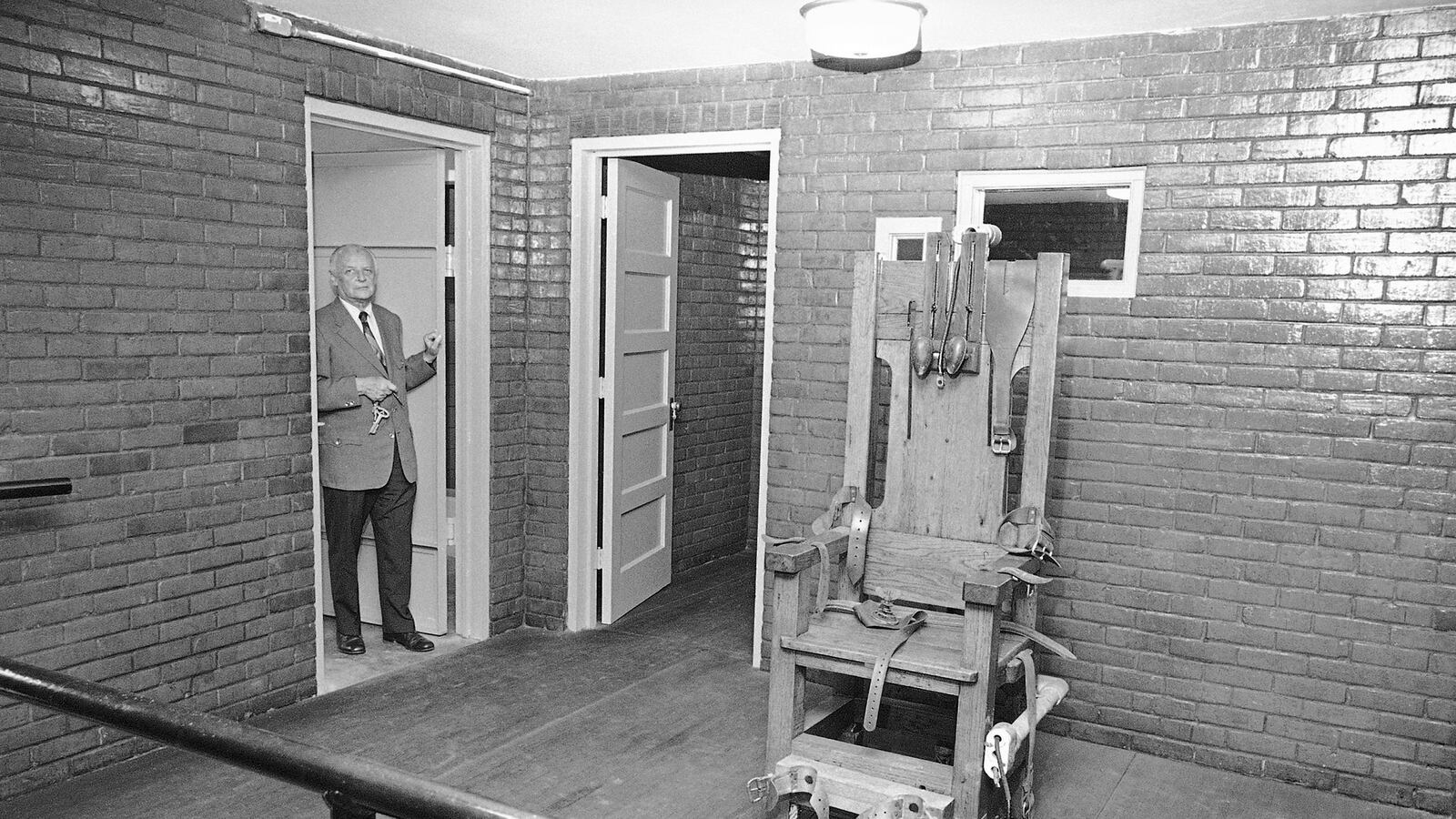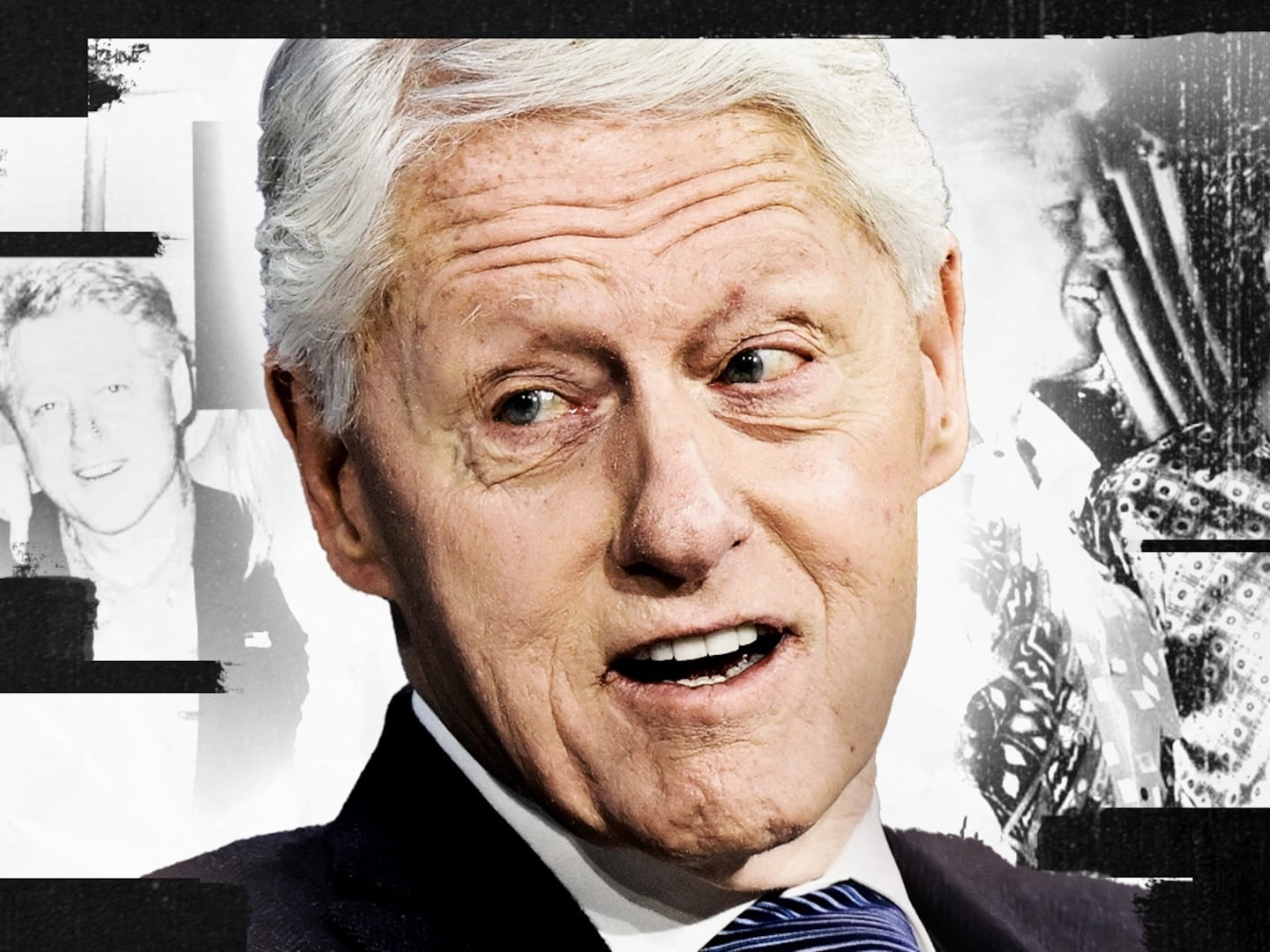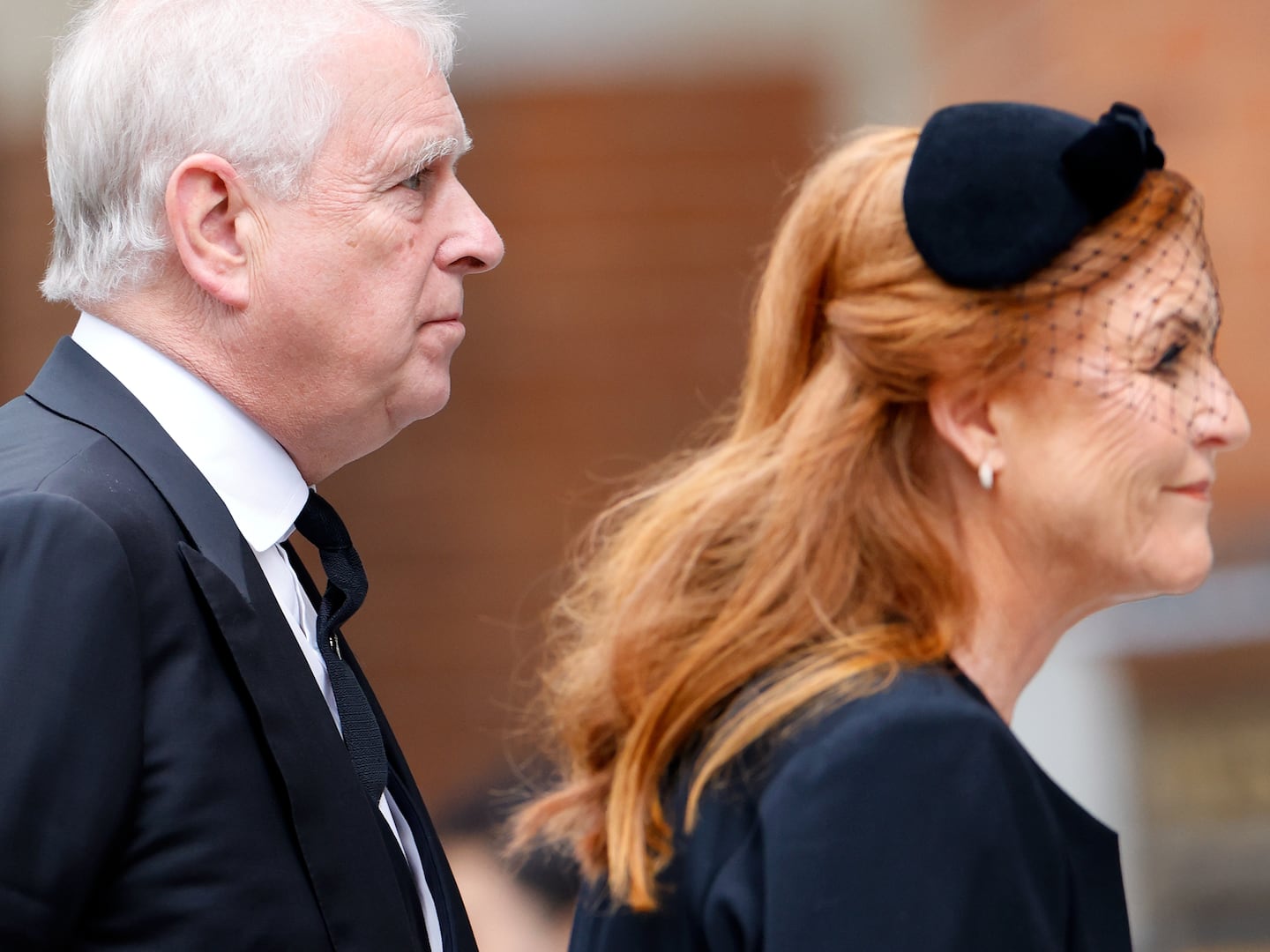I owe my legal career to two men and three aphorisms. The first man is my brother. He was smart, funny, irreverent, and I idolized him. Alan was almost six years older, and from my end of that gap, he seemed to be everything that I wanted to be, and little that I was. But that didn’t stop him from having confidence in me. “Kid,” he said, “you’re a person who has to excel,” a word that did not seem to belong in my universe. When, in return, I gave him a profoundly skeptical look, he added even greater assurance. “Relax, kid,” he said, “even Queen Elizabeth breaks wind.”

The second man is Richard “Racehorse” Haynes, his nickname coined by a high school football coach unimpressed by the young Haynes’s speed. When Racehorse later became a criminal lawyer and won a string of seemingly unwinnable cases, the nickname took on metaphorical significance: no one could keep up with Race in a courtroom. One day soon, Race would become the most famous criminal lawyer of his generation, but even before that and certainly by 1964, when I entered the University of Houston Law School, he was already our most renowned alumnus, the one my classmates and I would gather in the student lounge to talk about almost reverentially. (“The Horse made twenty-five thousand last year, Bubba, I shit you not!”)
After I opened my own law offices in 1968, I used to position myself in the criminal courthouse’s green-tiled basement cafeteria just to “bump into” Haynes. Soon I was drinking Teddy Roosevelt quantities of coffee with the Great Man and other young lawyers eager to soak up his insights and axioms, some of which ought to be chiseled into marble above the courthouse steps. Of course, many fine and noble sentiments about the law are inscribed up there, but it would be far more practical if lawyers could look up and be reminded, “Never put a woman on the jury with lips the size of a chicken’s asshole.”
Race had one rule that remains for me first among equals: “All knowledge is useful in a courtroom,” he would say, “and nothing is more important than knowing your client.” It took a few trials, but I soon learned how to humanize the person I represented—to establish not only the facts of his case but also of his life, so that the twelve strangers in the box could not judge him without knowing him—as a husband and father, fellow worker and friend. And that’s when I started winning, too.
Consider the case of The State of Texas v. Diana B.
In the summer of 1979, I was sitting with a cup of coffee and a newspaper in the Avalon Diner & Drug Store near the Houston neighborhood of River Oaks. I’d been reading about a young woman named Diana B., who was being held on charges of murdering her husband. The headlines were gruesome: after shooting and killing him, she had used a chain saw to dismember his body. When the blade broke, instead of calling it a day, she drove to the hardware store and bought a new one. Once her husband’s body lay in five parts, Diana stuffed them into five garbage bags and loaded them into the trunk of her car. Three days later, at her family’s ranch in San Bernardino, California, she confessed to her parents, asked for their help in disposing of the body, and when they refused, slashed her wrists and ran into a field, which is where local homicide detectives found and arrested her. Doctors sewed her up, the police jailed her, and now she awaited extradition to Houston to stand trial for murder.
Everyone at the Avalon was talking about the case. We all assumed the woman was guilty. At that moment, my secretary phoned the diner to tell me that a former client was on the other line asking if I would be willing to represent a friend of his who’d landed in a bit of trouble.
His friend was Diana B. I immediately accepted.
On the Saturday morning before trial, I sat at Racehorse’s kitchen table, seeking his advice. Even he was not optimistic. “People don’t mind killin’,” he said. “What they don’t like is messin’ with the body.” He suggested I pitch the case toward convincing the jury to give Diana B. a lighter sentence. “Unless,” he said, “you get lucky during voir dire.”
Voir dire is another name for jury selection, when lawyers from both sides ask potential jurors about their backgrounds and beliefs in order to figure out who they want and, even more important, don’t want on the jury. It is also an excellent opportunity to condition panelists by the questions they ask and the answers they elicit to see the facts their way. In Diana’s case I would have to persuade a jury that a wife had the right to act in self-defense—use deadly force—against her husband, which was far from a given in Texas back then. So I began voir dire by introducing my four-foot-eleven client to the jury. Then, with Diana still standing, I asked if anyone had known her deceased husband, whom I described as “a really big man, almost six four and two hundred fifty pounds.” No one did, but that was not the point. That mental image was a perfect segue into my next question, which was whether anyone had reservations about following the law that allowed a woman to use every means necessary to protect herself—even if her attacker is her husband and even if protecting herself means killing him. A hand shot up in the rear of the courtroom. A man on the aisle pointed down the row to an old woman who sat crying quietly. She was so far in the back of the panel that there was no chance she’d make it to the jury; I almost suggested that she be excused. Instead, I walked down the aisle, handed her a glass of water, and asked if she was okay. The woman took a moment to compose herself and then said, “I wish my daughter had the courage to do what she did,” gesturing toward my client. “If she had, she would still be alive today.”

Obviously, that woman did not make it to the jury. But before she left, she had encapsulated our defense and humanized Diana B. in a single statement. On the stand, Diana testified about her husband’s abuse, including how it had once landed her in the hospital. And I introduced the pictures of her swollen face and the record of his guilty plea to misdemeanor assault—a rare admission for a man to make in those days. Then, with the jury leaning forward in their seats, I walked Diana through the events that led up to the shooting, how for three full days and nights, her husband had kept her awake, slugging her, poking her in the breasts with an ice pick, and holding a gun to her head while threatening to kill her and her two children. Finally he thrust the gun into her hands and said she didn’t have the guts to kill him. He was mistaken.
I had gotten lucky during voir dire, but Diana hadn’t even tried to retreat—an essential element of self-defense—much less hold her husband at bay with the pistol while she called the police. So how to convince the jury that she was nonetheless entitled to the defense and explain what happened after she killed him? Prior to trial, I learned that Diana had spent a year of her adolescence in a full-body cast—the victim of severe scoliosis, or curvature of the spine—and couldn’t even turn over or go to the bathroom without her dad carrying her. The next witness I called was a psychiatrist, not to create an insanity defense, but to explain her state of mind that night. He testified that being held in confinement again, and under such extreme conditions, made Diana’s response inevitable. Not only did she have to fight, she also had to flee the scene of her captivity; if that meant dismembering the body to make it possible to put it in her car, then she’d do what she had to do. It wasn’t a perfect explanation—far from it—but it did demonstrate her lack of mens rea, the mind “bent on evil” required to convict someone of murder. Still, I was worried about what Race had said about “messin’ with the body.”
After eight days of trial, the jury went out to deliberate. Judge Jon Hughes, a former prosecutor and defense lawyer himself, predicted that they would find Diana guilty and give her probation. But he was wrong. They returned after forty-five minutes and acquitted her.
In Diana’s case, there was a plausible defense—but beyond her compelling side of the story, was justice done? To me, it is hard to argue otherwise: the jury followed the law of self-defense, exonerated Diana of the murder, and her deceased husband—in blunt terms—got what he had coming. But what about cases where the reviled and clearly guilty defendant walks free? Has justice, nonetheless, been done? Think of O.J. Simpson, acquitted of murdering his estranged wife, Nicole. I don’t know of anyone—except the members of the jury—who thinks he didn’t do it, and he’s all but admitted it. Did Johnnie Cochran, the lawyer who “got him off,” as the public is prone to say, serve justice or thwart it? The answer is that Cochran did precisely what was required of him: he served justice by winning his case within the rules. Still, an overwhelming majority of people believe that if Simpson really did get away with murder, justice wasn’t served, and on a moral or religious level, that’s an unassailable conclusion. But legal justice, no less moral or exacting, is something else. Legal justice requires that in the presence of reasonable doubt about the defendant’s guilt, he must be acquitted. That makes my responsibility as a criminal lawyer clear: I have to push the prosecution, with its vast resources and built-in credibility, to meet that standard, regardless of my client’s actual guilt or innocence. Or, as Racehorse once put it, “When I hear the federal judge read, ‘The United States of America v. Henry Gonzalez,’ I know there’s nothing standing between the United States government and Henry Gonzalez but me.” Whatever Henry may have done, he still deserves to be tried according to the standards of our criminal justice system: within it, when both the defense and the prosecution have done their absolute principled best to “win,” the system has been served, no matter the outcome. Justice, seldom perfect, often subjective, but in its own rough way, has been done.
Now consider another example: The State of Texas v. Charles H.
Alan B., a thirty-one-year-old carpet executive and father of two, with an expectant wife, disappears outside the Brass Jug, a bar in Houston. Police dismiss the matter as a “runaway husband” and refuse to open an investigation, leaving Alan’s devastated father to launch one of his own.
Six months later, a private investigator locates Alan’s skeletal remains in a watery ditch near Galveston.
Shortly afterward, a woman confesses to having witnessed the killing. She names the defendant as Charles H. and describes in detail how the murder occurred; she even suggests a credible motive. Her statement—typed up in a holding cell—fills twelve single-spaced pages.
On the other hand, as the defendant’s attorney will argue, the “victim” was a gambler, a philanderer, and up to his ears in debt. Lots of people had reason to kill Alan B.—indeed, compelling reasons to want him dead, while the defendant had never even seen him before.
Still, the eyewitness’s story is detailed and persuasive.
That is, until an alibi is offered, putting the defendant a hundred miles away from the murder when it allegedly occurred.
Who is to be believed? What should the verdict be? What would it mean, in this case, for justice to be served? More than ever, resolution comes down to the skillfulness of the lawyers involved. Who knows his own client—or The Bad Guy (the other side’s client)—better? Who can better use that knowledge to persuade the jury to see things his way? A trial like this is one of the reasons why I love the law: guilty or innocent, were I the lawyer defending Charles H., the man accused of murdering Alan B., and I didn’t do everything in my power to win his case, I would be the one failing justice.
Well, not everything within my power, of course. One must always, always, play by the rules. Unfortunately, there are some lawyers—more ruthless than one would imagine—who do whatever it takes to win. They want it so badly that when they think no one is looking they put a thumb on the scales of justice, sometimes tilting them inexorably.
This last example—of the carpet executive dumped near Galveston—is the most perfect illustration of courtroom injustice I have encountered in more than forty years of trial law. Evidence was destroyed, perjury suborned, and justice defiled. But in this case I wasn’t the defense attorney, trying to get his client “off.” Nor was I the prosecutor, pursuing justice for the victim. Alan B. was my brother.
The first autopsy report I ever read was my brother’s. Even now, more than four decades later, there is rarely a day that goes by when I don’t recall, unbidden, its haunting cause of death: “Gunshot wound to the head through-and-through.” Since the day we buried him four decades ago, I have rarely talked about Alan and almost never about how he died. My children knew nothing of their uncle, and some of my friends were unaware that I ever had a brother, never mind that he was murdered. It wasn’t that he didn’t matter; I was closer to Alan than I’ve been to anyone. I just couldn’t remember why. A violent death can do that: saturate your most vivid memories of the victim’s life, like blood staining dirt on a deserted road.
Until finally, in 2008, I decided to write this book, to give Alan a life of sorts, and, to the extent possible, set the record straight about his murder and him, his astonishing qualities and alarming flaws included. The more I wrote, the more comfort I took in remembering him and our relationship—and the more I learned and remembered, the more I wanted to lay out in writing the injustices he suffered, not just in the tortured hours of his death or the weeks of his murderer’s sordid trial but also at the hands of those of us who loved him.
And that is a story that begins a very long time ago.
Excerpted from David Berg’s Run, Brother, Run: A Memoir of a Murder in My Family, to be published by Scribner this week.






